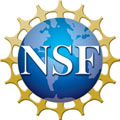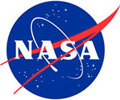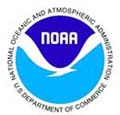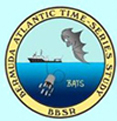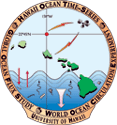On This Page:
Honolulu, Hawaii, September 21-23, 2010 Application Deadline: April 21, 2010
Time series are an essential tool for detecting the complex interactions among climate forcing, ecosystem structure and biogeochemical cycling. To date, there are relatively few sites around the world where detailed, high quality, interdisciplinary time series measurements of ocean biogeochemistry are long enough to begin to differentiate longer term climate trends from higher frequency dynamics, such as event to seasonal scale processes.
Meeting Objectives
There have been few opportunities for the OCB community to help define future research at the U.S.-supported time series sites. This workshop aims to:
- Provide a synthesis of ongoing research at US OCB sites,
- Summarize knowledge gained on temporal variability and controls on key ecosystem processes and biogeochemical cycles,
- Highlight capabilities at each of the US OCB time-series sites,
- Promote community input in identifying priority directions and
- Develop new opportunities for future research at the existing ocean time-series.
The committee welcomes participation from scientists of all career stages and members of the international science community. Students, particularly involved with time-series work, are encouraged to attend. Participants will explore the feasibility and impact of developing new research that may combine OCB time series sites, and provide input to the OCB program on how the time series programs can best continue to serve the oceanographic community and the public.
Science Themes and Workshop Structure
The major OCB science themes that will guide discussions during the workshop are:
- Feedbacks and climate sensitivities of biogeochemical cycles and interactions with ecosystem structure.
- Ocean carbon production, uptake, and storage.
The steering committee seeks participants from relevant OCB communities to conduct balanced and fruitful discussions. Plenary talks, centered around key findings obtained from time-series measurements, in particular coupling or decoupling of elemental cycles and production and export, will provide the backbone for some of the discussion.
Breakout group discussions will be focused on:
1) Prioritization of biogeochemical processes that may be climate sensitive, may be involved in feedbacks, or appear important to sustain or develop as components of time-series sampling;
2) Identification of important scales of variability associated with processes that couple (or decouple) elemental cycles, productivity, and export; and
3) Discussion of appropriate and suitable sampling platforms, technologies, and strategies for sustained observing of biogeochemical dynamics at the existing time series sites.
Facilities at the East-West Center in Hawaii will limit the meeting size to approximately 50 participants.
Application Deadline: April 21, 2010
The steering committee will assess both the number and breadth of expertise of registrants and make selections in order to meet the size constrains and keep discussion focused.
Steering Committee
Matthew Church - University of Hawaii
Frank Muller-Karger - University of South Florida
Mike Lomas - Bermuda Institute of Ocean Sciences
Sue Banahan - Consortium for Ocean Leadership
Ken Johnson - Monterey Bay Aquarium Research Institute
Laura Lorenzoni - University of South Florida
The Time-Series
The Bermuda Atlantic Time-series Study (BATS, 32º10'N, 64º30'W) was established in 1988 to study the ocean carbon cycle by analyzing important hydrographic and biological parameters throughout the water column. BATS complements the other Sargasso Sea time-series, the Ocean Flux Program (OFP) a deep sediment trap mooring in place since 1978, and Hydrostation "S" a hydrographic time-series sampled approximately biweekly since 1954. Currently, BATS makes monthly measurements of important hydrographic, biological and chemical parameters throughout the water column at different sites within the Sargasso Sea. A primary focus of the BATS program is to improve our understanding of the “time-varying” components of the ocean carbon cycle, related biogenic elements of interest (e.g., nitrogen, phosphorus, silica), and identifying the relevant physical, chemical and ecosystem properties responsible for this variability.
Since October 1988, the Hawaii Ocean Time-series (HOT) has conducted systematic and sustained biogeochemical and physical oceanographic measurements at the deep-ocean site, Station ALOHA (A Long-Term Oligotrophic Habitat Assessment; 22° 45'N, 158° 00'W), located 100 km north of Oahu, Hawaii. HOT occupies Station ALOHA on approximately a monthly basis, evaluating variability in hydrography, chemistry and biology of the central Pacific Ocean. A central goal of the program is to provide a comprehensive description of the temporal dynamics associated with biogeochemistry and ocean-climate in the North Pacific subtropical gyre.
The Carbon Retention in a Colored Ocean Time Series (CARIACO) is located in the southeastern Caribbean Sea, off the coast of Venezuelan (10° 30'N, 64° 40'W). The time series station has been visited by ship once per month since November 1995 and has a sediment trap mooring. The primary goal of CARIACO is to help understand past and present climate change by studying the relationship between hydrography, primary production, terrigenous inputs, element cycling in the water column, and sediment fluxes and accumulation in a region affected alternatingly by coastal wind-driven upwelling and riverine discharge. The region has high primary production and vertical particulate organic matter flux relative to mid-ocean waters, and the water column is anoxic below about 250 m. The CARIACO sediment contain well-preserved climate signals that represent change in the Atlantic Ocean, and these sediments are used to calibrate the chronology of other climate records such as the Greenland ice cores.
Individually, these three time series have been used to examine processes that occur in each of their geographic domains. Together, they have the potential to provide information on interannual to decadal-scale variability in global ocean processes and the climate system.
Related Literature
BATS:
Bates, N.R., 2007. Interannual variability of the oceanic CO2 sink in the subtropical gyre of the North Atlantic Ocean over the last two decades. Journal of Geophysical Research 112: doi:10.1029/2006JC003759.
Cianca, A., Helmke, P., Mourino, B., Rueda, M.J., Llinas, O. and Neuer, S. 2007. Decadal analysis of hydrography and in situ nutrient budgets in the western and eastern North Atlantic subtropical gyre. Journal of Geophysical Research – Oceans 112: 10.1029/2006JC003788.
Lomas, M.W., Steinberg, D.K., Dickey, T., Carlson, C.A., Nelson, N.B., Condon, R.H. and Bates, N.R. 2010. Increased ocean carbon export is countered by increased mesopelagic attenuation in the Sargasso Sea. Biogeosciences 7: 57-70.
Phillips, H.E. and Joyce, T.M. 2007. Bermuda’s tale of two time-series: Hydrostation S and BATS. Journal of Physical Oceanography 37, 554-571.
Steinberg, D.K., C.A. Carlson, N.R. Bates, R.J. Johnson, A.F. Michaels, and A.H. Knap. 2001. Overview of the US JGOFS Bermuda Atlantic Time-series Study (BATS): a decade-scale look at ocean biology and biogeochemistry. Deep-Sea Research II 48: 1405-1447.
CARIACO:
Alvera-Azcarate, A. A. Barth and R. H. Weisberg. A nested model of the Cariaco Basin (Venezuela): description of the basin's interior hydrography and interactions with the open ocean. Ocean Dynamics DOI 10.1007/s10236-008-0169-y.
Astor, Y. M. , M.I. Scranton, F. Müller-Karger, R. Bohrer, and J.García. 2005. fCO2 variability in a tropical coastal upwelling time series station. Mar. Chem. 97 (3-4): 245-261.
Müller-Karger, F. E., R. Varela, R. Thunell, Y. Astor, H. Zhang, and C. Hu. 2004. Processes of Coastal Upwelling and Carbon Flux in the Cariaco Basin. Deep-Sea Res. II 51: 927-943. [doi:10.1016/j.dsr2.2003.10.010].
Muller-Karger, Frank. E., R. Varela, R. C. Thunell, M. I. Scranton, G. T. Taylor, Y. Astor, C. R. Benitez-Nelson, L. Lorenzoni, E. Tappa, M. A. Goñi, D. Rueda, and C. Hu. 2010. The CARIACO Oceanographic Time Series. In: Carbon and Nutrient Fluxes in Continental Margins: A Global Synthesis. JGOFS Continental Margins Task Team (CMTT). Editors: Kon-Kee Liu, Larry Atkinson, Renato Quinones, Liana Talaue-McManus. Springer-Verlag, Berlin/Heidelberg.
Scranton, M.I., M. McIntyre, G.T. Taylor, F. Muller-Karger, K. Fanning, and Y.Astor.Temporal Variability in the Nutrient Chemistry of the Cariaco Basin. In: Neretin LN (ed.), Past and Present Water Column Anoxia. NATO Science Series, Springer, Netherlands, p. 139-160.
Thunell, R., C. Benitez-Nelson, R. Varela, Y. Astor and F. Müller-Karger. 2007. Particulate Organic Carbon Fluxes Along Upwelling-Dominated Continental Margins: Rates and Mechanisms. Global Biogeochemical Cycles 21, GB1022, doi:10.1029/2006GB002793.
HOT:
Church, M.J., C. Mahaffey, R.M. Letelier, R. Lukas, J.P. Zehr, and D.M. Karl. 2009. Physical forcing of nitrogen fixation and diazotroph community structure in the North Pacific Subtropical Gyre. Global Biogeochemical Cycles 23: doi:10.1029/2008GB003418.
Corno, G., D.M. Karl, M.J. Church, R.M. Letelier, R. Lukas, and M.R. Abbott. 2007. The impact of climate forcing on ecosystem processes in the North Pacific Subtropical Gyre. Journal of Geophysical Research – Oceans 112, C04021, doi:10.1029/2006JC003730.
Dore, J.E., R. Lukas, D.W. Sadler, M.J. Church, and D.M. Karl. 2009. Physical and biogeochemical modulation of ocean acidification in the central North Pacific. Proceedings of the National Academy of Sciences, USA 106:12235-12240.
Karl, D. 1999. A sea of change: biogeochemical variability in the North Pacific Subtropical Gyre. Ecosystems 2: 181-214.
Karl, D.M. and R. Lukas. 1996. The Hawaii Ocean Time-series (HOT) program: Background, rationale and field implementation. Deep-Sea Research II 43: 129-156.



